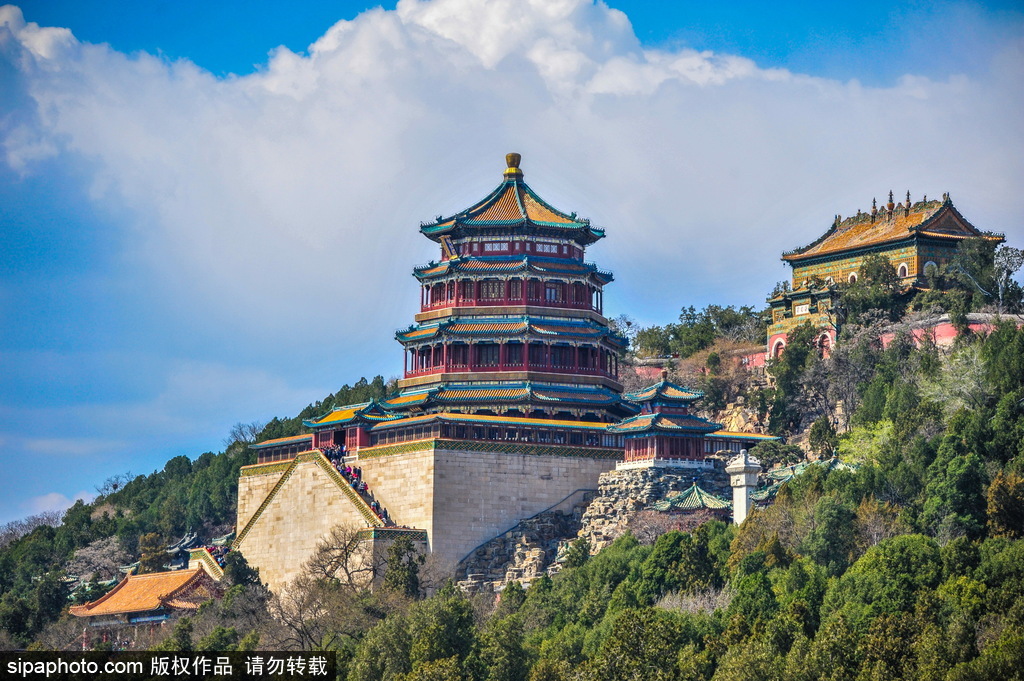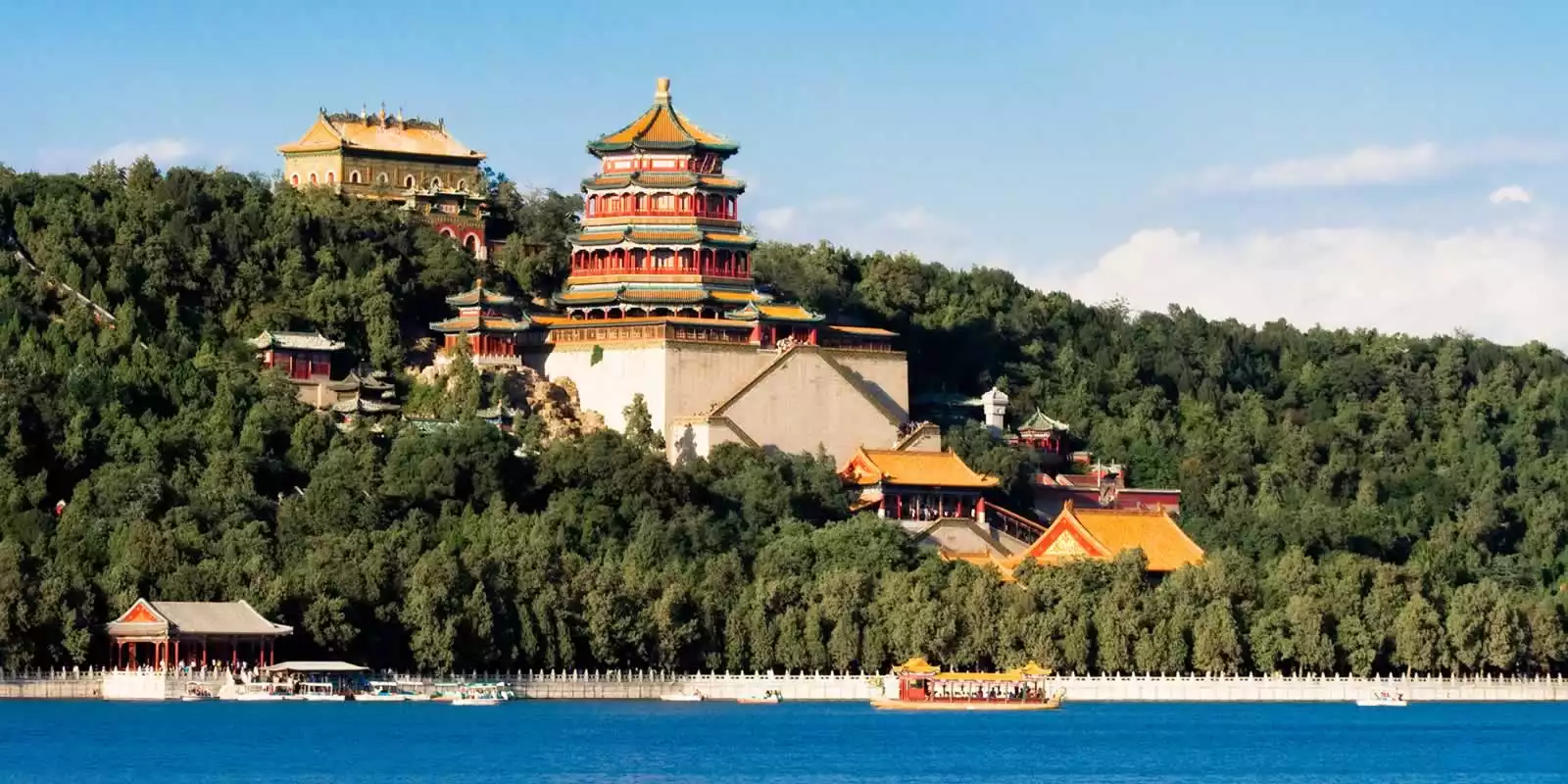Strolling Beijing’s Summer Palace and Imperial Elegance
Welcome to Jusha Travel, your go-to source for exploring the wonders of China! If you’re a traveler eager to delve into Beijing historical sites, then a visit to the Beijing Summer Palace is an absolute must. For more on other iconic Beijing attractions, check out this guide. This stunning UNESCO World Heritage Site embodies the essence of China imperial gardens, offering a perfect blend of natural beauty, architectural grandeur, and cultural depth. In this post, we’ll take you on a virtual stroll through this imperial masterpiece, sharing insights into its history, design, and modern-day appeal. Here at jusha.travel, we love sharing tips to make your China journey unforgettable, so let’s dive into why the Summer Palace should top your Beijing travel guide for experiencing Cultural attractions Beijing and China heritage tours.

The Legacy of Beijing’s Summer Palace
The Beijing Summer Palace, known as Yiheyuan, stands as one of China’s most cherished Beijing historical sites, offering a window into the opulent world of imperial life. To explore more historical places in China, see this comprehensive guide. Originally built in 1750 by Emperor Qianlong of the Qing Dynasty, this vast complex spanning about 290 hectares was designed as a summer retreat to escape the sweltering heat of Beijing’s city center. Its creation symbolized not just leisure but also the political and cultural ambitions of the era, blending natural landscapes with exquisite architecture to reflect harmony between humans and nature. For more on its historical roots, check out this detailed resource: Summer Palace in Beijing: Map, Highlights & Travel Tips.
At the heart of the Summer Palace are iconic features like Kunming Lake and Longevity Hill, which serve as the scenic backbones of this imperial haven. Kunming Lake, with its shimmering waters, was engineered to mimic the mythical Eastern Sea, while Longevity Hill provides breathtaking panoramic views that have inspired poets and emperors alike. As a key Cultural attractions Beijing, the palace wasn’t just a private getaway; it was a multifaceted site for political gatherings, spiritual rituals, and artistic expression. For a full list of best places to visit in China, refer to this guide, where visitors can appreciate how the Qing emperors used such spaces to project their power and cultural sophistication. This makes it an ideal stop on any China heritage tours, where visitors can appreciate how the Qing emperors used such spaces to project their power and cultural sophistication.
One fascinating fact is how the Summer Palace integrates elements of Chinese mythology into its design, drawing from ancient legends to create an otherworldly atmosphere. For instance, the three islands in Kunming Lake represent the divine mountains of Penglai, Fangzhang, and Yingzhou, symbolizing immortality and imperial longevity. If you’re planning a trip, keep in mind that the palace is located in Beijing’s Haidian District, about 20 kilometers from the city center, making it easily accessible via subway or bus. For more on must-visit cities and adventures, explore this list. Tickets cost around 30 RMB (about 4 USD), and it’s open from 6:30 am to 6:00 pm in summer, so arrive early to beat the crowds and enjoy the serene morning vibes—a practical tip straight from our experiences at jusha.travel.

Architectural Marvels of China’s Imperial Gardens
What truly sets the Beijing Summer Palace apart as a premier example of China imperial gardens is its masterful architecture, a fusion of traditional Chinese elements and subtle Western influences. For more cultural activities in Beijing, check out this resource. This design philosophy not only highlights the ingenuity of Qing Dynasty builders but also played a pivotal role in shaping modern Chinese architecture. Inspired by ancient myths and natural landscapes, the palace’s layout features a harmonious balance of hills, lakes, and ornate structures that evoke a sense of imperial elegance. For a deeper dive into its architectural influences, explore this insightful paper: Influential Architecture: Summer Place in China Research Paper.
Key highlights include the famous Long Corridor, a 700-meter-long covered walkway adorned with intricate paintings depicting scenes from Chinese history, folklore, and landscapes. It’s not just a path; it’s a storytelling marvel that connects visitors to the cultural narratives of Beijing historical sites. Then there’s the Hall of Benevolence and Longevity, an imperial residence with elaborate decorations, and the Tower of Buddhist Incense atop Longevity Hill, offering stunning views of Kunming Lake. Don’t miss the Marble Boat, a symbolic structure representing stability and prosperity, which adds a touch of whimsy to the grounds.
As you wander these paths, you’ll notice how the Summer Palace incorporates elements from other famous Chinese sites, like the replicated Suzhou Street, which mimics the bustling commercial areas of Jiangnan. This attention to detail makes it a fantastic spot for cultural enthusiasts on a Beijing travel guide itinerary. A fun cultural insight: many of these designs were influenced by the era’s fascination with harmony, drawing from Taoist principles that emphasize balance in nature. If you’re into photography or technology, use apps like Baidu Maps for navigation or even AR tools to overlay historical overlays on your visit—modern tech enhancing traditional travel, much like what we explore on jusha.travel.

Imperial Life and Cultural Insights at the Summer Palace
Stepping into the Beijing Summer Palace is like entering a time capsule of Qing Dynasty opulence, where emperors hosted banquets, held court meetings, and sought leisure amidst stunning Cultural attractions Beijing. Learn more about cultural activities in Beijing from this feature. This was more than a garden; it was a microcosm of imperial society, reflecting the lavish lifestyles of rulers like Emperor Qianlong and Empress Dowager Cixi. Imagine strolling through grand halls where state affairs unfolded, or picnicking by the lake as performers entertained the court—it’s a vivid reminder of how China imperial gardens served as both sanctuaries and symbols of power. Learn more about its historical significance from this UNESCO listing: Summer Palace, an Imperial Garden in Beijing.
One intriguing aspect is the palace’s role in daily imperial life. While emperors primarily used it for day retreats, Empress Dowager Cixi turned it into her primary residence in her later years, overseeing restorations that preserved its grandeur. This period highlights the resilience of Chinese culture, with the palace surviving wars and rebellions to become a public park in 1924. Today, visitors can experience this heritage through boat rides on Kunming Lake or exploring recreated areas like Suzhou Street, which offer a glimpse into ancient commercial life.
For travelers curious about Chinese culture, the Summer Palace is ripe with insights into food and traditions. Nearby, you might sample local snacks like jianbing (a savory crepe) from vendors, blending your visit with authentic Beijing street food. On the technology front, download the official Summer Palace app for guided tours and interactive maps, making your China heritage tours more immersive. Pro tip: Visit during off-peak seasons to avoid crowds and truly soak in the peaceful ambiance—it’s one of those experiences that jusha.travel recommends for a deeper connection to China’s past.

Visiting Today: Practical Tips and Continued Significance
In modern times, the Beijing Summer Palace remains a vibrant destination on any Beijing travel guide, inviting travelers to experience its imperial elegance while appreciating its ongoing cultural importance. For more on Beijing’s top spots, see this adventure list. Despite its turbulent history—including damages during the Second Opium War and Boxer Rebellion—the palace has been meticulously restored, standing as a testament to China’s resilience and commitment to preserving Beijing historical sites. For a comprehensive overview, refer to this Wikipedia entry: Summer Palace – Wikipedia.
A typical visit lasts 2–3 hours, but we suggest allocating more time to fully explore its 2.9 square kilometers. Start with a leisurely walk up Longevity Hill for sweeping views, then cruise Kunming Lake by boat for a serene perspective. Practical tips include wearing comfortable shoes for the hilly terrain, bringing water and sunscreen, and checking the weather app to avoid rainy days. If you’re traveling with family, note that the palace offers kid-friendly activities like scavenger hunts based on historical themes.
This site isn’t just about the past; it’s a bridge to contemporary China. For instance, ongoing events often incorporate technology, such as virtual reality exhibits that recreate imperial banquets, aligning with China’s innovative spirit. As you plan your China heritage tours, remember that the Summer Palace exemplifies how ancient traditions continue to inspire modern life, much like the content we curate at jusha.travel to guide your adventures.
As we wrap up our journey through the Beijing Summer Palace, it’s clear that this gem of China imperial gardens and Cultural attractions Beijing offers an unforgettable blend of history, beauty, and inspiration. For more Beijing historical insights, explore this related post. Whether you’re marveling at its architecture or reflecting on imperial stories, a visit here will enrich your understanding of China’s rich heritage. We’ve only scratched the surface, so for more tips on Beijing historical sites and beyond, head over to jusha.travel for more engaging content and personalized guides.
We’d love to hear from you! Share your own Summer Palace stories in the comments below, visit jusha.travel for more China travel inspiration, or explore related articles like our guides to other Beijing travel guide favorites. Safe travels and happy exploring!

